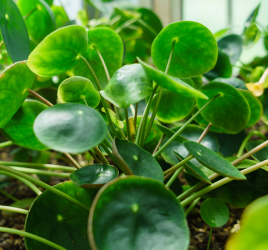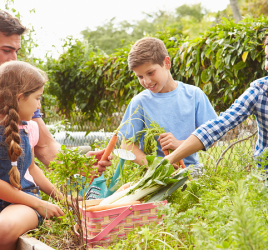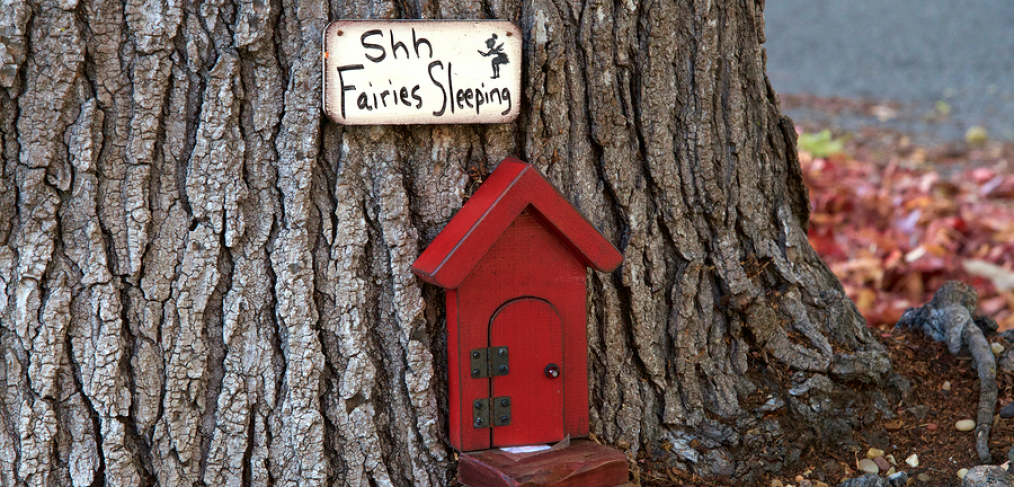
Fairy Gardens: How to Create Enchanting Small Spaces
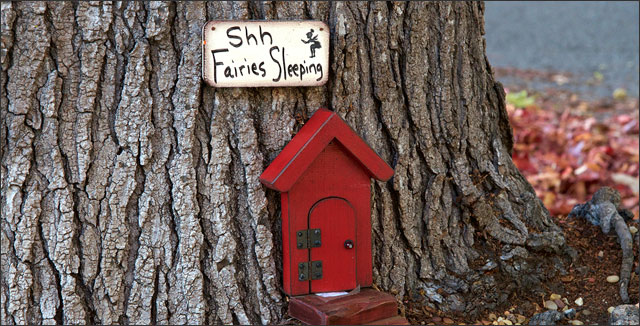
Do you have kids in your life right now or will you have them soon? If not, have you taken the time, lately, to look in the nooks and crannies of your outdoor space or stoop down to see things from a tiny person’s perspective?
I have to admit, I haven’t done this enough. However, I have been noticing a trend in things I read. On social media, I am seeing what I think would open the imagination of a person at any age and which could prove rewarding especially to a home gardener.
What is this trend I’m talking about? Fairy gardens, of course.
Last year, I took my kids to the local zoo and we noticed, in an unused space that had once been filled with bushes, a small communal area with paths and benches and a few flower beds.
Upon closer inspection, my kids discovered tiny houses made of natural materials, landscaped “front lawns” and figurines dotting the landscape.
They were captivated.
Unfortunately, we stumbled upon the fairy garden toward the end of our trip or they would have stayed in that place for hours. It woke-up their imaginations.
I couldn’t help but share in their delight as I knelt down to look at the scenes they were making. What made it even better was that the figurines were not breakable and clearly placed there for kids to play – I didn’t have to worry they would ruin anything.
More recently, as we were taking a walk through our metro downtown, my kids pointed out to me the existence of tiny “doors” fixed toward the bottom and just to the side of the entrance doors of many of the shops lining our main street.
Each “fairy door” was made to look like a miniature entrance for small folk who might also be customers there. Again, my kids were entranced – even though the doors didn’t open – and could have stayed there inspecting them for half an hour at least. However, it was cold, and there were many, so we didn’t stay that long at each one. Now my kids have something to look forward to on every walk in the winter months.
Likewise, I have one friend on social media who routinely makes temporary fairy houses and gardens with her two girls whenever they go on an outdoor adventure. What a great way to help kids focus on a task, enjoy the outdoors and use their imaginations! Come summer, I’m planning to try this with my kids on our first nature walk.
Where Did Fairy Gardening Originate?
With the fairies, of course! Seriously, this trend has seen surges in popularity for over 100 years. It may have made its debut with a big splash at the Chicago World’s Fair (incidentally, designed by landscape architect Frederick Law Olmsted) in 1893 with the Japanese Bonsai tree exhibit.
Think about it: Americans had relatively little exposure to outside cultures in general, but Japanese gardening practices had to be almost totally new to the average American. With the sight of these exotic tiny trees and a cultural heritage of fairies – via British folklore – very much in mind, I can imagine fairy gardens springing up all over the city of Chicago and the entire country afterward. You might even remember perfecting your own fairy garden as a child with a grandma or great aunt.
Ideas for Fairy Gardens
I think the best fairy gardens can be flexible: made and re-made according to one’s whim. I love to check out what others have done with a quick Internet search – moss, smooth stones, twigs, branches and little handmade furniture and tiny bunting being my favorite raw materials.
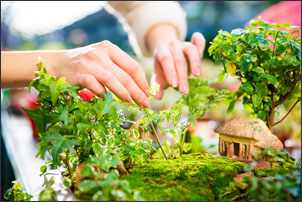
Creating and perfecting the look you want can be a wonderful, calming activity. If you do have kids, you might discover you want your own off-limits fairy garden.
Types of Fairy Gardens
Tiny Gardening
Consider looking into the art of Bonsai , which is a beautiful art form in and of itself. If you are already working on a bonsai tree, why not add a fairy house or outdoor living room? You can also plant fairy flowers, which are flowers bred to be tiny, to create the illusion that fairies really do live there.
Container Gardening
You might already have, or be planning, a container garden in your living room, on your front porch or in your backyard. I have seen enchanting little gardens in vintage suitcases, metal washtubs, teacups, terrariums and more.
Your imagination is the limit.
Shop for supplies specifically made with fairy gardens in mind or make what you need with twigs and leaves. One good idea to keep in mind for container gardening is to choose plants which will do well in containers. If you have an elaborate fairy “set-up” in mind, you don’t want your plants dying so you have to take apart your fairy house before you can replace the plant. For that matter, make sure your plants can be easily watered and drained before you proceed with the tiny embellishments.
Nooks and Crannies
This one make take some more planning and warmer weather, but could be the most rewarding! I have seen some of the cutest designs using botanical elements already found on trees and in yards. For example, a nook between big tree roots or on toadstools growing on the side of a big tree.
If you have the notion, you could create a whole fairy “city” to surprise a child. A small red door with a toadstool awning on the side of a tree could give rise to tiny stairs built in the side of the tree and a “back door” around the other side. You could mark out a corner of the garden and create tiny terraces using pea gravel and dirt or place fairy houses among your perennials.
Take Away
Whatever you do with fairy gardening, there is no wrong way. Search around to get inspired and let your imagination take you away! I promise, you will be happy you did.


